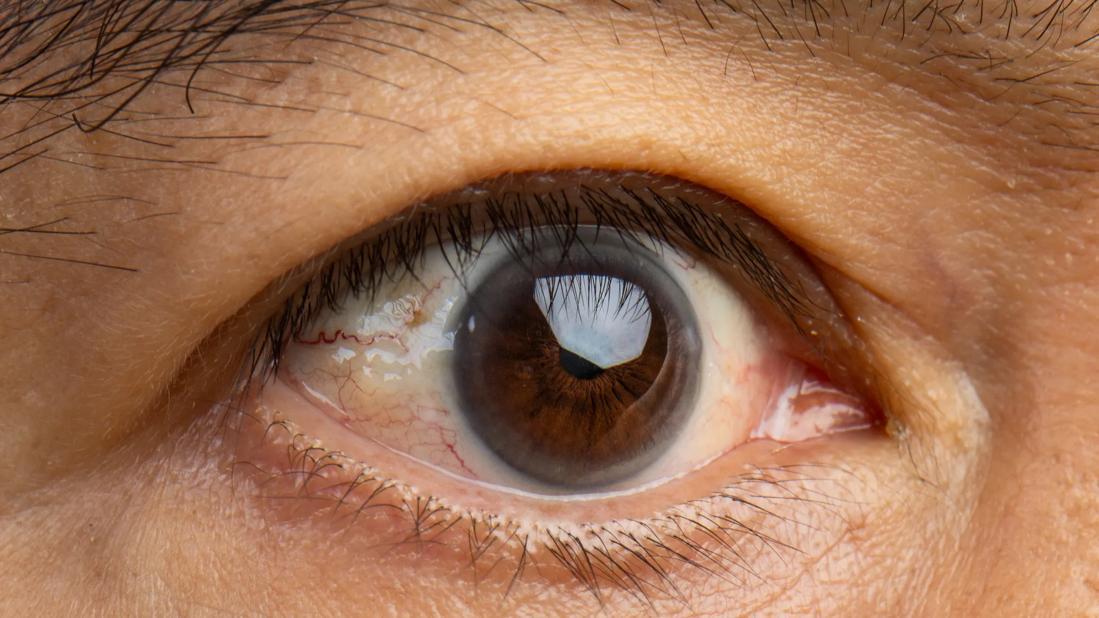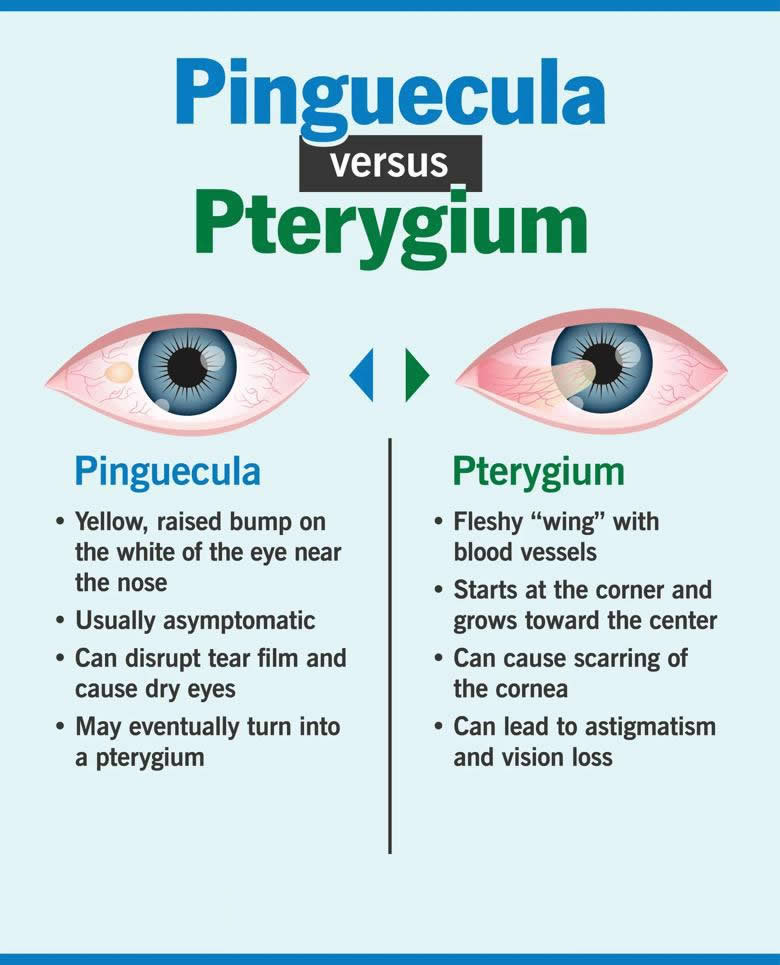What’s the Difference Between Pinguecula and Pterygium?
One is a raised yellow spot on your eye, the other is a fleshy growth

Pinguecula and pterygium are growths that appear on the conjunctiva of your eyeball (the clear film that covers and protects the white part of your eyes). They’re mostly harmless at first. But if left untreated, they could cause symptoms like pain, irritation and changes to your vision as they grow.
Ophthalmologist Craig See, MD, explains how these two conditions form and how to tell them apart from one another.
Pinguecula vs. pterygium

Pinguecula and pterygium are both thought to be caused by overexposure to ultraviolet (UV) rays from the sun and other environmental irritants. They tend to form in the corner of your eye near your nose and then grow toward the colored part of your eye.
“If someone spends a lot of time in the sun, they may get spots on their skin that are darker,” says Dr. See. “With pinguecula and pterygium, it’s the same concept. We think it’s that same degeneration you get from long-term exposure to UV light that causes these to grow along with other irritants like dust, dirt and smoke.”
How can you tell the difference between a pinguecula and a pterygium?
Although they share the same causes, there are notable differences between a pinguecula and a pterygium on your eye.
A pinguecula is a small, yellow, elevated bump on the white part of your eye that forms in response to irritation and inflammation. Pinguecula can be made up of protein, fat or calcium deposits and tends to grow slowly over time. For most people, they don’t cause any symptoms. But if it becomes too big, it can disrupt your tear film and the quality of your tears, resulting in burning, irritation and dry eyes.
A pterygium looks like a pink, fleshy wing or wedge that extends from the corner of your eye toward the center of your cornea. In some cases, it may contain visible blood vessels. Pterygium is also called “surfer’s eye” because people who surf are at higher risk for getting these growths because of unprotected exposure to sun and sand. Though it starts off as harmless, pterygium tends to grow faster than pinguecula and results in more serious symptoms if it reaches the center of your eye.
“When a pterygium grows across your cornea, it starts to distort the shape of your cornea and that can change your prescriptions or give you an astigmatism,” says Dr. See. “As it grows closer to the center of your cornea, it’s going to create more and more vision changes and problems, and it can leave scars behind on your cornea.”
Can pinguecula become pterygium?
Yes, pinguecula can turn into pterygium if someone continues to be exposed to UV rays and any other environmental irritants that caused the original growth. “A pinguecula is limited to the white part of your eye,” clarifies Dr. See. “When it starts growing onto the cornea, where you see your iris, that’s when it would become a pterygium. The risk of this happening is really related to your exposure to the sun and other elements.”
Tips to prevent pinguecula and pterygium
Doctors can remove a pinguecula or pterygium if they’re causing you pain or there’s a risk of disrupting your cornea and vision. But even before it gets to that point, there are things you can do to slow their growth or prevent them from ever occurring.
“The main thing you can do is just avoid the sun hitting your eyes,” advises Dr. See. “So, wearing sunglasses, hats and sun-protective clothing is your best bet to try and prevent these growths.”
Eye drops can provide some relief, but they’re more for dry eye symptoms and less about decreasing your risk for pterygium or pinguecula growth.
“If you’re working out on the water, or you’re a lifeguard and you get sun in your eyes all day, eye drops aren’t going to do very much,” he adds. “The No. 1 thing you can do is take care of your sun exposure. Eye drops are secondary.”
If you notice any visible changes to the surface of your eye or you have a pinguecula or pterygium and you’re dealing with redness, irritation or vision problems, get it looked at by an optometrist or an ophthalmologist as early as possible before they cause any more damage.